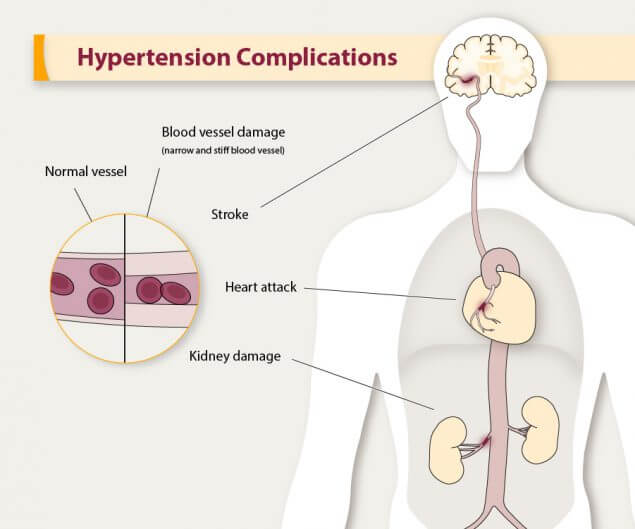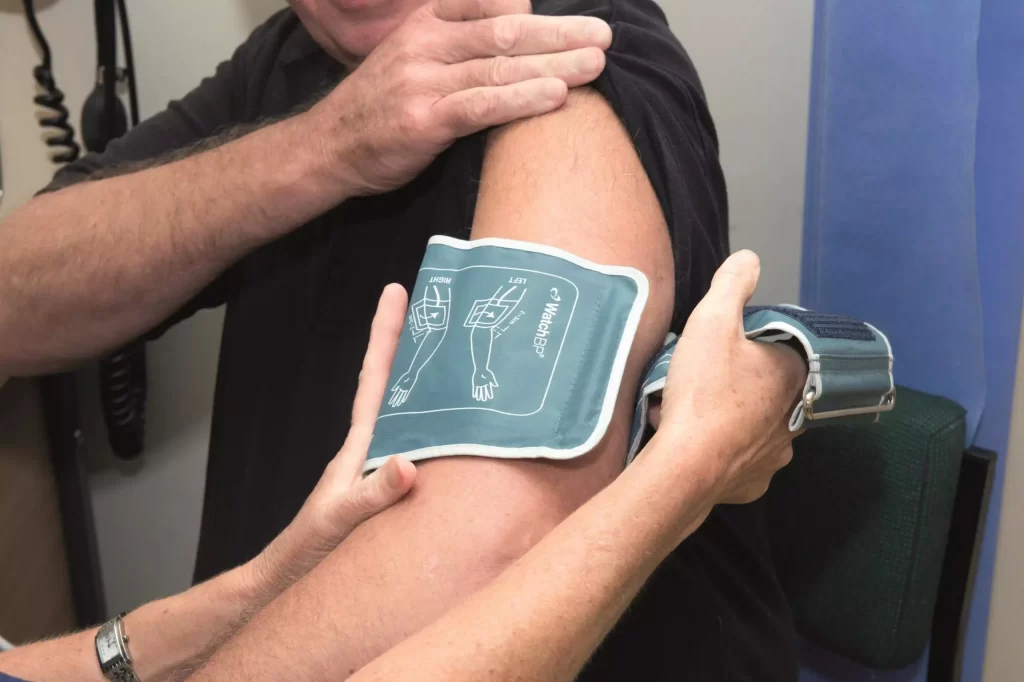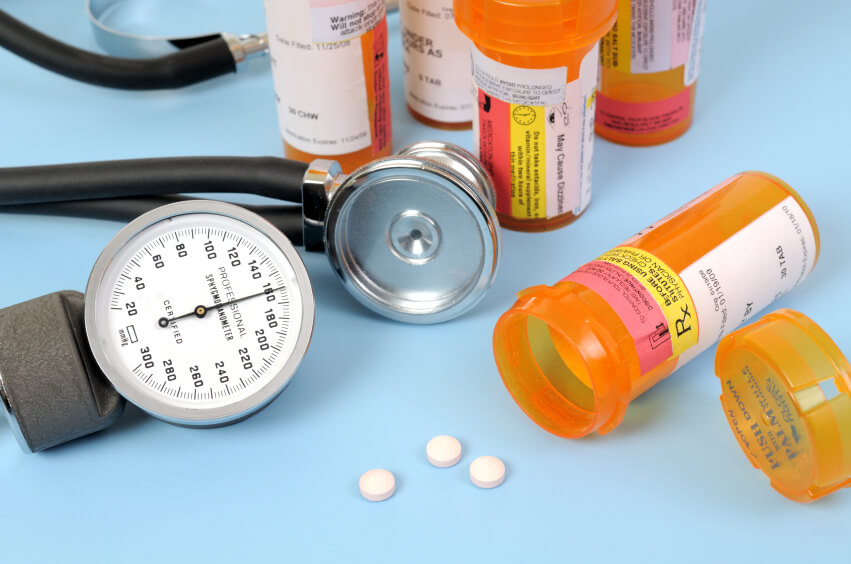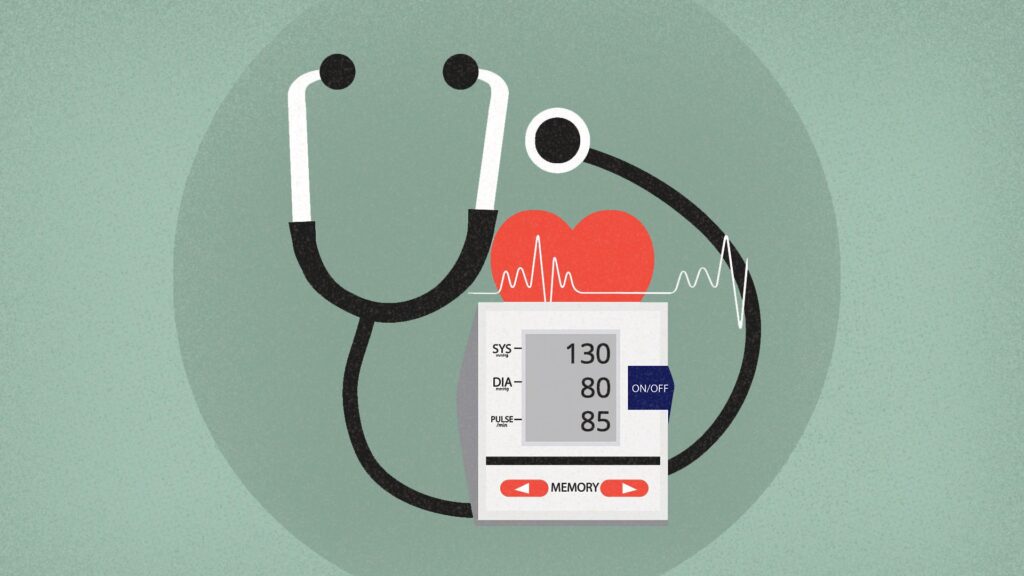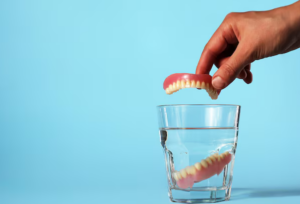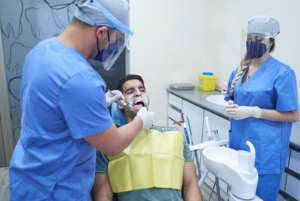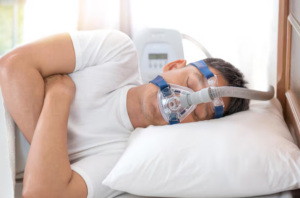
High blood pressure is called hypertension. This condition increases the heart’s workload, causing it to pump blood harder than normal. This causes damage to the heart and blood vessels, raising the risk of heart disease and stroke. The symptoms of hypertension can also be life-threatening. This article discusses the symptoms of hypertension and ways to manage it. You can also take in how to prevent it from developing. It is crucial to speak with a medical professional if you experience these symptoms.
Symptoms
If you have high BP (Blood Pressure), you may be suffering from symptoms like headaches, fatigue, dizziness, vision problems, chest pain, irregular heartbeat, and nausea. Hypertension can also cause blood in the urine. In some cases, it may go undetected, and a health care professional may not diagnose it until it increases dangerously. Hypertension is the best diagnosis by a doctor, who will check your blood pressure using a sphygmomanometer. However, stress may skew the results, so a doctor will also examine your heart.
Blood pressure levels often elevated during community health screenings, but isolated elevated readings do not necessarily indicate hypertension. Blood pressure levels vary throughout the day, so a reading during screening may differ from a reading obtained at home. Moreover, the blood pressure reading recorded by a primary care provider may not be the same as the one obtained during a yearly physical. If you notice any of these manifestations, you should contact a doctor immediately. However, remember that recognizing hypertension early will reduce its severity and help you manage it.
During the first stages of hypertension, a person may experience mild headaches and dizziness. Other signs include nosebleeds and vision changes. If you suffer from very high BP, you may experience throbbing headaches and dizziness. Additionally, people with high blood pressure may experience shortness of breath, especially when exercising or performing strenuous activities. Although this is not the classic symptom of high blood pressure, it should take it seriously.
A blood pressure check should be performed twice a year for people with risk factors or a family history of cardiovascular disease. It will help identify any problems before they become dangerous. Essential hypertension occurs over time and is common among most people. Some people, however, are genetically predisposed to it due to gene mutations or abnormalities in their parents. Moreover, people over 65 years of age are more prone to developing hypertension.
High blood pressure is one of the main causes of heart attacks and strokes. When left unprocessed, it can lead to a host of serious complications. It can damage the heart and kidneys and may even cause the unborn baby’s death. If not treated, hypertension can lead to serious and fatal complications. A doctor will help you get a proper diagnosis and treatment for hypertension. If you have high blood pressure (BP), you need to consult a doctor immediately.
Diagnosis
Blood pressure can be elevated or decreased depending on your age, heart condition, medications, and activity. Your doctor will measure your blood pressure by attaching a cuff to an artery in your arm. The cuff is then compressed to the highest pressure when the heart beats and the lowest when it relaxes. Diagnosis of hypertension requires at least three elevated blood pressure readings. Your doctor will also query your medical history, family history, and possible risk factors.
To diagnose hypertension, a physician will perform a sphygmomanometer test. The doctor may also order other tests to identify damage to the target organ. This procedure has uses to diagnose hypertension for many years. Currently, the diagnostic threshold for hypertension is 140/90 mmHg. Therefore, if a patient’s clinic blood pressure is higher than their average daytime reading, they may have white coat hypertension.
Various studies have used different cut-off points to define hypertension. Generally, hypertension explains as a blood pressure greater than 120 mmHg systolic or 140 mmHg in either direction. Different studies determine its importance in other risk factors and overall cardiovascular health. For example, it may be difficult to diagnose resistant hypertension without the presence of at least 4 antihypertensive medications and a history of poor medication adherence.
The main causes of hypertension are genetics and dietary factors. Certain dietary changes and increased physical activity may help maintain a healthy blood pressure level. In rare cases, your doctor may prescribe a combination of drugs. For example, your doctor may order medication if you aren’t responding to lifestyle changes or have trouble quitting smoking. Depending on the intensity of your hypertension, your doctor may prescribe you an angiotensin-converting enzyme inhibitor (ACEi) to lower the effects of the hormone epinephrine. These drugs block the effects of angiotensin and prevent the blood vessels from narrowing.
While the early stages of primary hypertension may not have any noticeable symptoms, damage to the blood vessels can still occur over time. As a result, it is essential to receive a blood pressure check to avoid complications. If the pressure increases, the patient should seek treatment as soon as possible. Once the condition manages, hypertension can be controlled and prevented. medical Diagnosis of hypertension
Treatment
When treating hypertension, there are many options available. The clinical guidelines for hypertension provide recommendations based on age, ethnicity, and the presence of comorbid conditions. These guidelines are rigorously evaluated and often long-winded. Unfortunately, clinical practitioners rarely take the time to read them, and the recommendations may be confusing. Here is a steamy of some of the options. Hopefully, these guidelines will help you determine which hypertension treatment option is right for you.
Lifestyle changes are a great way to lower blood pressure and prevent other health problems. Lifestyle changes include:
- Cutting back on sodium and salt.
- Increasing physical activity.
- Maintaining a healthy diet rich in vegetables and fruits.
Should also limit alcohol intake to no more than two drinks per day for men and one drink for women. The DASH diet is another effective option, limiting red meat, added sugars, and saturated fat. Again, these lifestyle changes may be effective without the use of medications.
The American College of Cardiology and American Heart Association have updated their guidelines for hypertension treatment. Healthy blood pressure (BP) is less than 120/80 mm Hg, but a doctor may prescribe medication if you have over 140/90 mm Hg. It’s important to check your blood pressure every few months because 1-5% of individuals with white coat hypertension progress each year to sustained hypertension. In addition to medication, lifestyle modifications include meditation and breathing techniques.
The main pharmacologic agents used for hypertension treatment are aldosterone antagonists. These medications are diuretics and block the release of aldosterone, which contributes to fluid buildup. Medicines that lower blood pressure is called vasodilators. These drugs act directly on the muscles in the arteries, preventing tightening. Certain drugs also regulate heart rate, which contributes to high blood pressure.
Although a systolic pressure of 180 mm Hg is the minimum for hypertension, the risk of decaying from a stroke or heart attack increases with each additional 20 mm Hg. This is why hypertension treatment is so important. To lower blood pressure, lifestyle changes are essential. Changing your lifestyle can reduce the risk of cardiovascular disease and stroke. It can be as simple as making some lifestyle changes for people with mild hypertension.
Prevention
For people with high blood pressure, the prevention of hypertension is vital to a healthy life. Managing blood pressure is easier when people participate in more physical activity. The AHA (American Heart Association) recommends 150 minutes of moderate-intensity aerobic activity or 75 minutes of vigorous activity per week, paired with two days of muscle-strengthening activities. A healthy lifestyle also limits alcohol intake. According to the American Heart Association, the recommended daily limit for alcohol consumption for women is one drink. In contrast, men should limit alcohol intake to two drinks per day.
Community partnerships are critical to improving public health and achieving high-quality hypertension prevention. Partnerships with community groups provide localized orientations to diverse populations. By integrating community groups into health care delivery systems, success rates increase. In addition to medical organizations, community service organizations can promote healthy lifestyles, provide culturally sensitive messages, and develop CVD risk factor screenings. However, the most crucial role of community partners in preventing hypertension is an advocate for community health promotion.
Lifestyle factors, such as obesity, can increase your risk of hypertension. Other risk factors include age, ethnicity, and family history. If you have been diagnosed with HBP (high blood pressure), focus on the risk factors you can change, such as smoking or excessive alcohol consumption. A doctor may also recommend a combination of medications. Lastly, you should consult a physician if you have a family history of hypertension. They will be able to prescribe the best treatment options for your unique situation.
Fortunately, lifestyle changes are the best primary prevention of hypertension. Lifestyle changes like losing excess weight, getting enough physical activity, and reducing alcohol intake can reduce the risk of hypertension. In addition, changing your diet to cover more fruits, vegetables, and low-sodium dairy products is a great place to start. By making these changes, you can break the cycle of hypertension and prevent costly consequences associated with the disease. In addition, these changes can construct a huge difference in the quality of life of those with hypertension.
Currently, the primary barrier to hypertension awareness is the lack of access to health care. In the U.S., those without health insurance are 70 per cent less likely to be aware of it than their counterparts with health insurance. However, people with hypertension are much more likely to be aware of it if they are insured. In addition, people with hypertension report having health insurance and using their health care provider as their usual source of care. Therefore, the most effective prevention strategies will include a multilevel approach involving the patient and care team.

